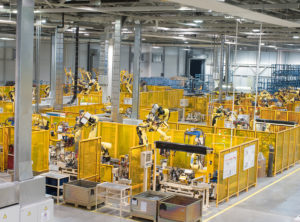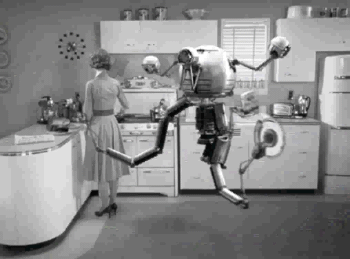It’s easy to look around our modern world and see what looks like science fiction brought to life. From self-driving cars to 3-D printers and the sum of the world’s knowledge accessible from a device you can fit in your pocket, it’s sometimes hard to imagine what the future could possibly hold that we don’t already have today. But manufacturing has come a long way in the last hundred years, and it’s sure to change even more in the next century.
Reflecting on the past
 A hundred years is a long time. Back in 1917, a hundred years ago, the United States was still adjusting to the changes brought about by the Industrial Revolution and dealing with the aftermath of the Civil War. The reliable production of identical interchangeable parts made assembly line production widespread, and the emergence of new technologies like steam turbines, telephones, and automobiles meant that manufacturing was quickly undergoing extensive changes.
A hundred years is a long time. Back in 1917, a hundred years ago, the United States was still adjusting to the changes brought about by the Industrial Revolution and dealing with the aftermath of the Civil War. The reliable production of identical interchangeable parts made assembly line production widespread, and the emergence of new technologies like steam turbines, telephones, and automobiles meant that manufacturing was quickly undergoing extensive changes.
While we may be long past the Industrial Revolution, our industries are now reeling from what experts are calling the digital revolution. And just as the early 1900s marked a time of sweeping change in manufacturing operations, so will the next hundred years be shaped by the information age.
What does the information age mean for manufacturing?
The automation the Industrial Revolution enabled was game-changing, but it’s nothing compared to the automation entering the manufacturing industry now. From robots to the Internet of Things and machine learning, manufacturing could be all but recognizable in a hundred years.
Robots, once the stuff of science fiction, are now popping up in real workplaces around the world. They pick and pack products at Amazon and assemble electronics at ABB Ltd. And while there has been much fearmongering around robots “taking jobs,” millions of unfilled positions in the manufacturing sector tell a different story. In reality, robots are making manufacturing safer, more efficient, and more cost-effective.
 The Internet of Things refers to the increasingly connected web of computing devices or “things” whose intercommunication enables previously unparalleled automation. This technology allows equipment to alert workers when — or even before — problems occur as well as communicate with other devices or equipment.
The Internet of Things refers to the increasingly connected web of computing devices or “things” whose intercommunication enables previously unparalleled automation. This technology allows equipment to alert workers when — or even before — problems occur as well as communicate with other devices or equipment.
Perhaps most exciting of all is machine learning, a data analysis tool. The precision, speed, and accuracy of machine analysis means that quantitative data is more valuable and applicable than ever, which could steeply improve industrial efficiency.
What will manufacturing look like in 100 years? It’s hard to tell — but there’s no doubt that it will be exciting to see the changes it will bring.
